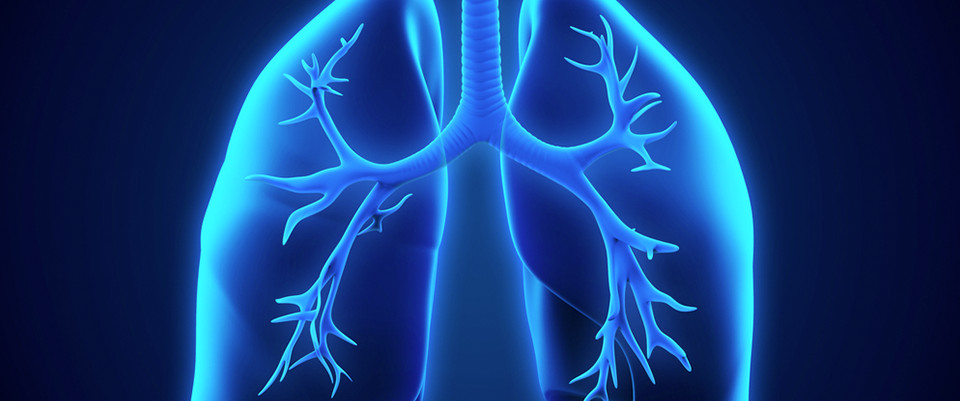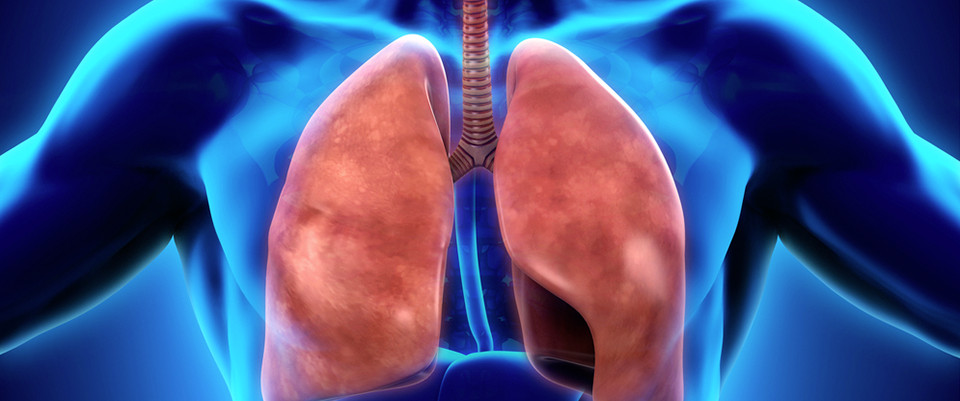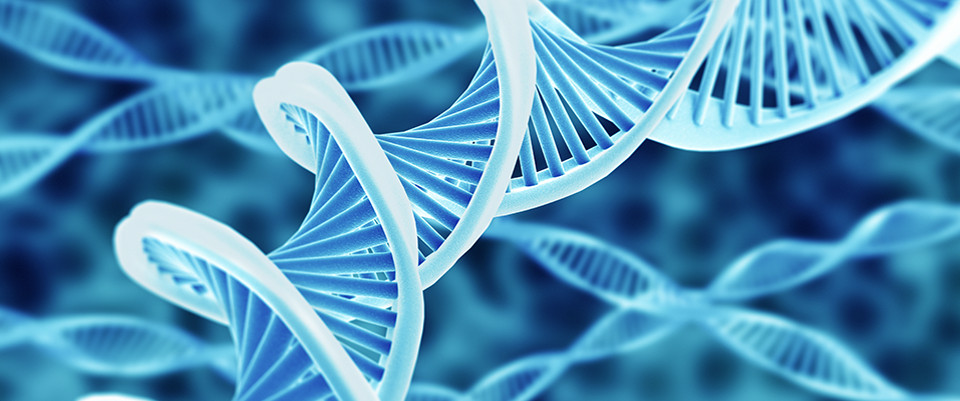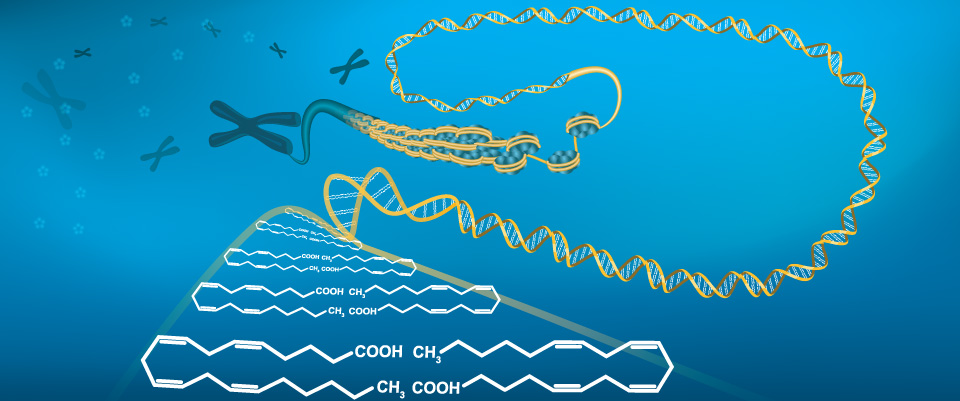PubMed
In vivo determination of the volatile metabolites of saprotroph fungi by comprehensive two-dimensional gas chromatography.
In vivo determination of the volatile metabolites of saprotroph fungi by comprehensive two-dimensional gas chromatography.
J Sep Sci. 2015 Mar 23;
Authors: de Lima PF, Furlan MF, Ribeiro FA, Pascholati SF, Augusto F
Abstract
In this work, we discuss the use of multi-way principal component analysis combined with comprehensive two-dimensional gas chromatography to study the volatile metabolites of the saprophytic fungus Memnoniella sp. isolated in vivo by headspace solid-phase microextraction. This fungus has been identified as having the ability to induce plant resistance against pathogens, possibly through its volatile metabolites. Adequate culture media was inoculated, and its headspace was then sampled with a solid-phase microextraction fiber and chromatographed every 24 h over seven days. The raw chromatogram processing using multi-way principal component analysis allowed the determination of the inoculation period, during which the concentration of volatile metabolites was maximized, as well as the discrimination of the appropriate peaks from the complex culture media background. Several volatile metabolites not previously described in the literature on biocontrol fungi were observed, as well as sesquiterpenes and aliphatic alcohols. These results stress that, due to the complexity of multidimensional chromatographic data, multivariate tools might be mandatory even for apparently trivial tasks, such as the determination of the temporal profile of metabolite production and extinction. However, when compared with conventional gas chromatography, the complex data processing yields a considerable improvement in the information obtained from the samples. This article is protected by copyright. All rights reserved.
PMID: 25808238 [PubMed - as supplied by publisher]
Pathologic metabolism: An exploratory study of the plasma metabolome of critical injury.
Pathologic metabolism: An exploratory study of the plasma metabolome of critical injury.
J Trauma Acute Care Surg. 2015 Apr;78(4):742-751
Authors: Peltz ED, D'Alessandro A, Moore EE, Chin T, Silliman CC, Sauaia A, Hansen KC, Banerjee A
Abstract
BACKGROUND: Severe trauma is associated with massive alterations in metabolism. Thus far, investigations have relied on traditional bioanalytic approaches including calorimetry or nuclear magnetic resonance. However, recent strides in mass spectrometry (MS)-based metabolomics present enhanced analytic opportunities to characterize a wide range of metabolites in the critical care setting.
METHODS: MS-based metabolomics analyses were performed on plasma samples from severely injured patients' trauma activation field blood and plasma samples obtained during emergency department thoracotomy. These were compared against the metabolic profiles of healthy controls.
RESULTS: Few significant alterations were observed between trauma activation field blood and emergency department thoracotomy patients. In contrast, we identified trauma-dependent metabolic signatures, which support a state of hypercatabolism, driven by sugar consumption, lipolysis and fatty acid use, accumulation of ketone bodies, proteolysis and nucleoside breakdown, which provides carbon and nitrogen sources to compensate for trauma-induced energy consumption and negative nitrogen balance. Unexpectedly, metabolites of bacterial origin (including tricarballylate and citramalate) were detected in plasma from trauma patients.
CONCLUSION: In the future, the correlation between metabolomics adaptation and recovery outcomes could be studied by MS-based approaches, and this work can provide a method for assessing the efficacy of alternative resuscitation strategies.
PMID: 25807403 [PubMed - as supplied by publisher]
Enhanced acylcarnitine annotation in high-resolution mass spectrometry data: fragmentation analysis for the classification and annotation of acylcarnitines.
Enhanced acylcarnitine annotation in high-resolution mass spectrometry data: fragmentation analysis for the classification and annotation of acylcarnitines.
Front Bioeng Biotechnol. 2015;3:26
Authors: van der Hooft JJ, Ridder L, Barrett MP, Burgess KE
Abstract
Metabolite annotation and identification are primary challenges in untargeted metabolomics experiments. Rigorous workflows for reliable annotation of mass features with chemical structures or compound classes are needed to enhance the power of untargeted mass spectrometry. High-resolution mass spectrometry considerably improves the confidence in assigning elemental formulas to mass features in comparison to nominal mass spectrometry, and embedding of fragmentation methods enables more reliable metabolite annotations and facilitates metabolite classification. However, the analysis of mass fragmentation spectra can be a time-consuming step and requires expert knowledge. This study demonstrates how characteristic fragmentations, specific to compound classes, can be used to systematically analyze their presence in complex biological extracts like urine that have undergone untargeted mass spectrometry combined with data dependent or targeted fragmentation. Human urine extracts were analyzed using normal phase liquid chromatography (hydrophilic interaction chromatography) coupled to an Ion Trap-Orbitrap hybrid instrument. Subsequently, mass chromatograms and collision-induced dissociation and higher-energy collisional dissociation (HCD) fragments were annotated using the freely available MAGMa software. Acylcarnitines play a central role in energy metabolism by transporting fatty acids into the mitochondrial matrix. By filtering on a combination of a mass fragment and neutral loss designed based on the MAGMa fragment annotations, we were able to classify and annotate 50 acylcarnitines in human urine extracts, based on high-resolution mass spectrometry HCD fragmentation spectra at different energies for all of them. Of these annotated acylcarnitines, 31 are not described in HMDB yet and for only 4 annotated acylcarnitines the fragmentation spectra could be matched to reference spectra. Therefore, we conclude that the use of mass fragmentation filters within the context of untargeted metabolomics experiments is a valuable tool to enhance the annotation of small metabolites.
PMID: 25806366 [PubMed]
Metabolomics and partial least square discriminant analysis to predict history of myocardial infarction of self-claimed healthy subjects: validity and feasibility for clinical practice.
Metabolomics and partial least square discriminant analysis to predict history of myocardial infarction of self-claimed healthy subjects: validity and feasibility for clinical practice.
J Clin Bioinforma. 2015;5:3
Authors: Mohamad N, Ismet RI, Rofiee M, Bannur Z, Hennessy T, Selvaraj M, Ahmad A, Nor F, Abdul Rahman T, Md Isa K, Ismail A, Teh LK, Salleh MZ
Abstract
BACKGROUND: The dynamics of metabolomics in establishing a prediction model using partial least square discriminant analysis have enabled better disease diagnosis; with emphasis on early detection of diseases. We attempted to translate the metabolomics model to predict the health status of the Orang Asli community whom we have little information. The metabolite expressions of the healthy vs. diseased patients (cardiovascular) were compared. A metabotype model was developed and validated using partial least square discriminant analysis (PLSDA). Cardiovascular risks of the Orang Asli were predicted and confirmed by biochemistry profiles conducted concurrently.
RESULTS: Fourteen (14) metabolites were determined as potential biomarkers for cardiovascular risks with receiver operating characteristic of more than 0.7. They include 15S-HETE (AUC = 0.997) and phosphorylcholine (AUC = 0.995). Seven Orang Asli were clustered with the patients' group and may have ongoing cardiovascular risks and problems. This is supported by biochemistry tests results that showed abnormalities in cholesterol, triglyceride, HDL and LDL levels.
CONCLUSIONS: The disease prediction model based on metabolites is a useful diagnostic alternative as compared to the current single biomarker assays. The former is believed to be more cost effective since a single sample run is able to provide a more comprehensive disease profile, whilst the latter require different types of sampling tubes and blood volumes.
PMID: 25806102 [PubMed]
Associations of cord blood metabolites with early childhood obesity risk.
Associations of cord blood metabolites with early childhood obesity risk.
Int J Obes (Lond). 2015 Mar 25;
Authors: Isganaitis E, Rifas-Shiman SL, Oken E, Dreyfuss J, Gall W, Gillman MW, Patti ME
Abstract
BACKGROUND/OBJECTIVE: Rapid postnatal weight gain is a potentially modifiable risk factor for obesity and metabolic syndrome. To identify markers of rapid infancy weight gain and childhood obesity, we analyzed the metabolome in cord blood from infants differing in their postnatal weight trajectories.
METHODS: We performed a nested case-control study within Project Viva, a longitudinal cohort of mothers and children. We selected cases (n=26) based on top quartile of change in weight-for-age 0-6 mo and BMI >85th percentile in mid-childhood (median 7.7 years). Controls (n=26) were age- and sex-matched, had normal postnatal weight gain (2(nd) or 3(rd) quartile of change in weight-for-age 0-6 mo) and normal mid-childhood weight (BMI 25(th)-75(th) percentile). Cord blood metabolites were measured using untargeted LC/MS; individual metabolites and pathways differing between cases vs. controls were compared in categorical analyses. We adjusted metabolites for maternal age, maternal BMI, and breastfeeding duration (linear regression), and assessed whether metabolites improved the ability to predict case-control status (logistic regression).
RESULTS: Of 415 detected metabolites, 16 were altered in cases vs. controls (T-test, nominal P<0.05). 3 metabolites were related to tryptophan: serotonin, tryptophan betaine, and tryptophyl leucine (46%, 48% and 26% lower in cases, respectively, P<0.05). Mean levels of 2 methyl donors, dimethylglycine and N-acetylmethionine, were also lower in cases (18% and 16% respectively, P=0.01). Moreover, the glutamine:glutamate ratio was reduced by 33% (P<0.05) in cases. Levels of serotonin, tryptophyl leucine, and N-acetylmethionine remained significantly different after adjustment for maternal BMI, age, and breastfeeding. Adding metabolite levels to logistic regression models including only clinical covariates improved the ability to predict case vs. control status.
CONCLUSIONS: Several cord blood metabolites are associated with rapid postnatal weight gain. Whether these patterns are causally linked to childhood obesity is not clear from this cross-sectional analysis, but will require further study.International Journal of Obesity accepted article preview online, 25 March 2015. doi:10.1038/ijo.2015.39.
PMID: 25804930 [PubMed - as supplied by publisher]
Optimising ketocarotenoid production in potato tubers: Effect of genetic background, transgene combinations and environment.
Optimising ketocarotenoid production in potato tubers: Effect of genetic background, transgene combinations and environment.
Plant Sci. 2015 May;234:27-37
Authors: Campbell R, Morris WL, Mortimer CL, Misawa N, Ducreux LJ, Morris JA, Hedley PE, Fraser PD, Taylor MA
Abstract
Astaxanthin is a high value carotenoid produced by some bacteria, a few green algae, several fungi but only a limited number of plants from the genus Adonis. Astaxanthin has been industrially exploited as a feed supplement in poultry farming and aquaculture. Consumption of ketocarotenoids, most notably astaxanthin, is also increasingly associated with a wide range of health benefits, as demonstrated in numerous clinical studies. Currently astaxanthin is produced commercially by chemical synthesis or from algal production systems. Several studies have used a metabolic engineering approach to produce astaxanthin in transgenic plants. Previous attempts to produce transgenic potato tubers biofortified with astaxanthin have met with limited success. In this study we have investigated approaches to optimising tuber astaxanthin content. It is demonstrated that the selection of appropriate parental genotype for transgenic approaches and stacking carotenoid biosynthetic pathway genes with the cauliflower Or gene result in enhanced astaxanthin content, to give six-fold higher tuber astaxanthin content than has been achieved previously. Additionally we demonstrate the effects of growth environment on tuber carotenoid content in both wild type and astaxanthin-producing transgenic lines and describe the associated transcriptome and metabolome restructuring.
PMID: 25804807 [PubMed - in process]
Multiple biomarkers of biological effects induced by cadmium in clam Ruditapes philippinarum.
Multiple biomarkers of biological effects induced by cadmium in clam Ruditapes philippinarum.
Fish Shellfish Immunol. 2015 Mar 21;
Authors: Ji C, Wu H, Zhou M, Zhao J
Abstract
Cadmium (Cd) is a known heavy metal pollutant in the Bohai Sea. Manila clam Ruditapes philippinarum is an important fishery species along the Bohai coast. In this study, the biological effects induced by two concentrations (20 and 200 μg/L) of Cd were characterized using multiple biochemical indices in the digestive glands of clam R. philippinarum. The total haemocyte counts, reactive oxygen species productions and antioxidant enzyme activities exhibited that Cd induced dose-dependent immune and oxidative stresses in clam digestive glands. Metabolic responses indicated that both Cd exposures caused immune stress marked by the elevated branched chain amino acids (valine, leucine and isoleucine), together with the disturbance in energy metabolism. The differential metabolic biomarkers related to osmotic stress, including homarine, betaine, tyrosine and phenylalanine, suggested the differential responsive mechanisms in clam digestive glands induced by Cd exposures. In addition, both Cd treatments enhanced the anaerobiosis metabolism in clam digestive glands via differential metabolic pathways.
PMID: 25804494 [PubMed - as supplied by publisher]
Untargeted Metabolomic Analysis of Human Plasma Indicates Differentially Affected Polyamine and L-Arginine Metabolism in Mild Cognitive Impairment Subjects Converting to Alzheimer's Disease.
Untargeted Metabolomic Analysis of Human Plasma Indicates Differentially Affected Polyamine and L-Arginine Metabolism in Mild Cognitive Impairment Subjects Converting to Alzheimer's Disease.
PLoS One. 2015;10(3):e0119452
Authors: Graham SF, Chevallier OP, Elliott CT, Hölscher C, Johnston J, McGuinness B, Kehoe PG, Passmore AP, Green BD
Abstract
This study combined high resolution mass spectrometry (HRMS), advanced chemometrics and pathway enrichment analysis to analyse the blood metabolome of patients attending the memory clinic: cases of mild cognitive impairment (MCI; n = 16), cases of MCI who upon subsequent follow-up developed Alzheimer's disease (MCI_AD; n = 19), and healthy age-matched controls (Ctrl; n = 37). Plasma was extracted in acetonitrile and applied to an Acquity UPLC HILIC (1.7μm x 2.1 x 100 mm) column coupled to a Xevo G2 QTof mass spectrometer using a previously optimised method. Data comprising 6751 spectral features were used to build an OPLS-DA statistical model capable of accurately distinguishing Ctrl, MCI and MCI_AD. The model accurately distinguished (R2 = 99.1%; Q2 = 97%) those MCI patients who later went on to develop AD. S-plots were used to shortlist ions of interest which were responsible for explaining the maximum amount of variation between patient groups. Metabolite database searching and pathway enrichment analysis indicated disturbances in 22 biochemical pathways, and excitingly it discovered two interlinked areas of metabolism (polyamine metabolism and L-Arginine metabolism) were differentially disrupted in this well-defined clinical cohort. The optimised untargeted HRMS methods described herein not only demonstrate that it is possible to distinguish these pathologies in human blood but also that MCI patients 'at risk' from AD could be predicted up to 2 years earlier than conventional clinical diagnosis. Blood-based metabolite profiling of plasma from memory clinic patients is a novel and feasible approach in improving MCI and AD diagnosis and, refining clinical trials through better patient stratification.
PMID: 25803028 [PubMed - as supplied by publisher]
Metabolomic Profiling in Perinatal Asphyxia: A Promising New Field.
Metabolomic Profiling in Perinatal Asphyxia: A Promising New Field.
Biomed Res Int. 2015;2015:254076
Authors: Denihan NM, Boylan GB, Murray DM
Abstract
Metabolomics, the latest "omic" technology, is defined as the comprehensive study of all low molecular weight biochemicals, "metabolites" present in an organism. As a systems biology approach, metabolomics has huge potential to progress our understanding of perinatal asphyxia and neonatal hypoxic-ischaemic encephalopathy, by uniquely detecting rapid biochemical pathway alterations in response to the hypoxic environment. The study of metabolomic biomarkers in the immediate neonatal period is not a trivial task and requires a number of specific considerations, unique to this disease and population. Recruiting a clearly defined cohort requires standardised multicentre recruitment with broad inclusion criteria and the participation of a range of multidisciplinary staff. Minimally invasive biospecimen collection is a priority for biomarker discovery. Umbilical cord blood presents an ideal medium as large volumes can be easily extracted and stored and the sample is not confounded by postnatal disease progression. Pristine biobanking and phenotyping are essential to ensure the validity of metabolomic findings. This paper provides an overview of the current state of the art in the field of metabolomics in perinatal asphyxia and neonatal hypoxic-ischaemic encephalopathy. We detail the considerations required to ensure high quality sampling and analysis, to support scientific progression in this important field.
PMID: 25802843 [PubMed - as supplied by publisher]
Combined mass spectrometric and chromatographic methods for in-depth analysis of phenolic secondary metabolites in barley leaves.
Combined mass spectrometric and chromatographic methods for in-depth analysis of phenolic secondary metabolites in barley leaves.
J Mass Spectrom. 2015 Mar;50(3):513-32
Authors: Piasecka A, Sawikowska A, Krajewski P, Kachlicki P
Abstract
Structural analysis via HPLC-ESI-MSn, UPLC-HESI-MS/MS and NMR reported 152 phenolic secondary metabolites in spring barley seedlings (Hordeum vulgare L.). Flavonoids with various patterns of glycosylation and acylation, as well as hydroxycinnamic acid glycosides, esters and amides, were identified in methanolic extracts from leaves of nine varieties of barley originating from different regions of the world. Hordatines derivatives, flavones acylated directly on the aglycone, and hydroxyferulic acid derivatives deserve special attention. Preparative chromatography enabled characterization of a number of compounds at trace levels with the 6-C-[6″-O-glycosyl]-glycosides and the 6-C-[2″,6″-di-O-glycosides]-glucoside structure of flavones. Derivatives of flavonols, quercetin and isorhamnetin were observed only in Syrian varieties. The ultra performance liquid chromatography profiles of UV-absorbing secondary metabolites were used for chemotaxonomic comparison between nine varieties of barley from different climatic conditions. The hierarchical clustering of bred lines from the Fertile Crescent and European and American varieties indicates a great diversity of chemical phenotypes within barley species. Copyright © 2015 John Wiley & Sons, Ltd.
PMID: 25800187 [PubMed - in process]
Analytical methods in untargeted metabolomics: state of the art in 2015.
Analytical methods in untargeted metabolomics: state of the art in 2015.
Front Bioeng Biotechnol. 2015;3:23
Authors: Alonso A, Marsal S, Julià A
Abstract
Metabolomics comprises the methods and techniques that are used to measure the small molecule composition of biofluids and tissues, and is actually one of the most rapidly evolving research fields. The determination of the metabolomic profile - the metabolome - has multiple applications in many biological sciences, including the developing of new diagnostic tools in medicine. Recent technological advances in nuclear magnetic resonance and mass spectrometry are significantly improving our capacity to obtain more data from each biological sample. Consequently, there is a need for fast and accurate statistical and bioinformatic tools that can deal with the complexity and volume of the data generated in metabolomic studies. In this review, we provide an update of the most commonly used analytical methods in metabolomics, starting from raw data processing and ending with pathway analysis and biomarker identification. Finally, the integration of metabolomic profiles with molecular data from other high-throughput biotechnologies is also reviewed.
PMID: 25798438 [PubMed]
Metabolic Markers Associated with High Mannose Glycan Levels of Therapeutic Recombinant Monoclonal Antibodies.
Metabolic Markers Associated with High Mannose Glycan Levels of Therapeutic Recombinant Monoclonal Antibodies.
J Biotechnol. 2015 Mar 19;
Authors: Kang S, Zhang Z, Richardson J, Shah B, Gupta S, Huang CJ, Qiu J, Le N, Lin H, Bondarenko PV
Abstract
High mannose (HM) glycan levels on secreted monoclonal antibodies can be influenced by external factors, including osmolality and copper deficiency, and by intrinsic factors determined by different cell lines. In order to identify the metabolic markers associated with HM glycan levels, metabolomics analysis was performed to assess the changes in the extracellular metabolites of recombinant cell lines at different time points during fed-batch production process. Ornithine was identified as the common metabolic marker influenced by both external and intrinsic factors when 8 different medium conditions and 8 different cell lines exhibiting different levels of HM were compared. A strong correlation was also observed between HM and mRNA expression levels of arginase 1, an enzyme that catalyzes the conversion of arginine to ornithine. The results from functional validation study showed that the supplementation of ornithine to the culture medium leads to an increased level of HM, while reduced concentration of spermine, a downstream product of ornithine metabolism, leads to a decreased level of HM. Additional metabolic markers correlating with HM glycan levels were identified from 8 cell line comparison analysis. A common feature shared by these identified markers is their previously described roles as contributors of cellular redox regulation.
PMID: 25797592 [PubMed - as supplied by publisher]
Metabolomics study of hematopoietic function of angelica sinensis on blood deficiency mice model.
Metabolomics study of hematopoietic function of angelica sinensis on blood deficiency mice model.
J Ethnopharmacol. 2015 Mar 19;
Authors: Li PL, Sun HG, Hua YL, Ji P, Zhang L, Li JX, Wei Y
Abstract
ETHNOPHARMACOLOGICAL RELEVANCE: Angelica sinensis (AS) has been used in traditional Chinese medicine for thousands of years to enrich and invigorate blood. In this study, the aim is to investigate the influence of AS on metabolism of blood deficiency mice model and to explore its anti-blood deficiency mechanism.
MATERIALS AND METHODS: The blood deficiency mice model was induced by being hypodermically injected with N-acetyl phenylhydrazine (APH) and being intraperitoneally injected with cyclophosphamide (CTX). Gas chromatography-mass spectrometry (GC-MS), principle component analysis (PCA) and partial least squares-discriminant analysis (PLS-DA) were used to identify potential biomarkers in plasma and splenic tissue.
RESULTS: The levels of white blood cell (WBC), red blood cell (RBC), haemoglobin (HGB) and platelet (PLT) showed a trend to return to control group after administrating with AS, while the dose of 10g/kg showed the best effect. Potential metabolite biomarkers (nine in the plasma and nine in the spleen homogenates) were identified in this study. These biomarkers were mainly related to five metabolic pathways, such as arachidonic acid metabolism, valine, leucine and isoleucine biosynthesis, glycine, serine and threonine metabolism, arginine and proline metabolism and TCA cycle.
CONCLUSION: Metabolomics was used to reflect an organism's physiological and metabolic state comprehensively, indicating that metabolomics was a potentially powerful tool to reveal the anti-blood deficiency mechanism of AS.
PMID: 25797116 [PubMed - as supplied by publisher]
Combined transcript, proteome, and metabolite analysis of transgenic maize seeds engineered for enhanced carotenoid synthesis reveals pleotropic effects in core metabolism.
Related Articles
Combined transcript, proteome, and metabolite analysis of transgenic maize seeds engineered for enhanced carotenoid synthesis reveals pleotropic effects in core metabolism.
J Exp Bot. 2015 Mar 20;
Authors: Decourcelle M, Perez-Fons L, Baulande S, Steiger S, Couvelard L, Hem S, Zhu C, Capell T, Christou P, Fraser P, Sandmann G
Abstract
The aim of this study was to assess whether endosperm-specific carotenoid biosynthesis influenced core metabolic processes in maize embryo and endosperm and how global seed metabolism adapted to this expanded biosynthetic capacity. Although enhancement of carotenoid biosynthesis was targeted to the endosperm of maize kernels, a concurrent up-regulation of sterol and fatty acid biosynthesis in the embryo was measured. Targeted terpenoid analysis, and non-targeted metabolomic, proteomic, and transcriptomic profiling revealed changes especially in carbohydrate metabolism in the transgenic line. In-depth analysis of the data, including changes of metabolite pools and increased enzyme and transcript concentrations, gave a first insight into the metabolic variation precipitated by the higher up-stream metabolite demand by the extended biosynthesis capacities for terpenoids and fatty acids. An integrative model is put forward to explain the metabolic regulation for the increased provision of terpenoid and fatty acid precursors, particularly glyceraldehyde 3-phosphate and pyruvate or acetyl-CoA from imported fructose and glucose. The model was supported by higher activities of fructokinase, glucose 6-phosphate isomerase, and fructose 1,6-bisphosphate aldolase indicating a higher flux through the glycolytic pathway. Although pyruvate and acetyl-CoA utilization was higher in the engineered line, pyruvate kinase activity was lower. A sufficient provision of both metabolites may be supported by a by-pass in a reaction sequence involving phosphoenolpyruvate carboxylase, malate dehydrogenase, and malic enzyme.
PMID: 25796085 [PubMed - as supplied by publisher]
High resolution metabolomics with acyl-CoA profiling reveals widespread remodeling in response to diet.
Related Articles
High resolution metabolomics with acyl-CoA profiling reveals widespread remodeling in response to diet.
Mol Cell Proteomics. 2015 Mar 20;
Authors: Liu X, Sadhukhan S, Sun S, Wagner GR, Hirschey MD, Qi L, Lin H, Locasale JW
Abstract
The availability of acyl-Coenzyme A (acyl-CoA) thioester compounds affects numerous cellular functions including autophagy, lipid oxidation and synthesis, and post-translational modifications. Consequently, the acyl-CoA level changes tend to be associated with other metabolic alterations that regulate these critical cellular functions. Despite their biological importance, this class of metabolites remains difficult to detect and quantify using current analytical methods. Here we demonstrate a universal method for metabolomics that allows for the detection of an expansive set of acyl-CoA compounds and hundreds of other cellular metabolites. We apply this method to profile the dynamics of acyl-CoA compounds and corresponding alterations in metabolism across the metabolic network in response to high fat feeding in mice. We identified targeted metabolites (>50) and untargeted features (>1000) with significant changes (FDR < 0.05) in response to diet. A substantial extent of this metabolic remodeling exhibited correlated changes in acyl-CoA metabolism with acyl-carnitine metabolism and other features of the metabolic network that together can lead to the discovery of biomarkers of acyl-CoA metabolism. These findings demonstrate a robust acyl-CoA profiling method and identify coordinated changes of acyl-CoA metabolism in response to nutritional stress.
PMID: 25795660 [PubMed - as supplied by publisher]
Metabolomic analysis of acid stress response in Saccharomyces cerevisiae.
Related Articles
Metabolomic analysis of acid stress response in Saccharomyces cerevisiae.
J Biosci Bioeng. 2015 Mar 17;
Authors: Nugroho RH, Yoshikawa K, Shimizu H
Abstract
Acid stress has been reported to inhibit cell growth and decrease productivity during bio-production processes. In this study, a metabolomics approach was conducted to understand the effect of lactic acid induced stress on metabolite pools in Saccharomyces cerevisiae. Cells were cultured with lactic acid as the acidulant, with or without initial pH control, i.e., at pH 6 or pH 2.5, respectively. Under conditions of low pH, lactic acid led to a decrease in the intracellular pH and specific growth rate; however, these parameters remained unaltered in the cultures with pH control. Capillary electrophoresis-mass spectrometry followed by a statistical principal component analysis was used to identify the metabolites and measure the increased concentrations of ATP, glutathione and proline during severe acid stress. Addition of proline to the acidified cultures improved the specific growth rates. We hypothesized that addition of proline protected the cells from acid stress by combating acid-induced oxidative stress. Lactic acid diffusion into the cell resulted in intracellular acidification, which elicited an oxidative stress response and resulted in increased glutathione levels.
PMID: 25795572 [PubMed - as supplied by publisher]
Dimethylglycine Deficiency and the Development of Diabetes mellitus.
Related Articles
Dimethylglycine Deficiency and the Development of Diabetes mellitus.
Diabetes. 2015 Mar 20;
Authors: Magnusson M, Wang TJ, Clish C, Engström G, Nilsson P, Gerszten RE, Melander O
Abstract
Experimental studies have suggested possible protective effects of dimethylglycine (DMG) on glucose metabolism. DMG is degraded to glycine through a DMG-dehydrogenase (DMGDH)-catalyzed reaction and this is the only known pathway for the breakdown of DMG in mammals. In this study we aimed to identify the strongest genetic determinant of circulating DMG concentration and to investigate its associations with metabolic traits and incident diabetes. In the cohort with full metabolomics data (n=709), low plasma levels of DMG were significantly associated with higher blood glucose levels (p=3.9E-4). In the genome-wide association study (GWAS) of the discovery cohort (n=5,205) the strongest genetic signal of plasma DMG was conferred by rs2431332 at the DMGDH-locus where the major allele was associated with lower DMG levels (p=2.5E-15). The same genetic variant (major allele of rs2431332), was also significantly associated with higher plasma insulin (p=0.019), increased insulin resistance (HOMA-IR) (p=0.019), as well as increased risk of incident diabetes (p=0.001) in the pooled analysis of the discovery cohort together with the two replication cohorts ((n=20,698) and (N=7,995). These data are consistent with a possible causal role of DMG deficiency in diabetes development and encourages for future studies examining if inhibition of DMG-dehydrogenase, or alternatively supplementation of DMG, might prove useful for the treatment/prevention of diabetes.
PMID: 25795213 [PubMed - as supplied by publisher]
Identification of novel biomarkers for Parkinson's disease by metabolomic technologies.
Related Articles
Identification of novel biomarkers for Parkinson's disease by metabolomic technologies.
J Neurol Neurosurg Psychiatry. 2015 Mar 20;
Authors: Hatano T, Saiki S, Okuzumi A, Mohney RP, Hattori N
Abstract
OBJECTIVE: The pathogenesis of Parkinson's disease (PD) involves complex interactions between environmental and genetic factors. Metabolomics can shed light on alterations in metabolic pathways in many diseases, including neurodegenerative diseases. In the present study, we attempted to elucidate the candidate metabolic pathway(s) associated with PD.
METHODS: Serum samples were collected from 35 individuals with idiopathic PD without dementia and 15 healthy age-matched control participants without PD. This analysis used a combination of three independent platforms: ultrahigh-performance liquid chromatography/tandem mass spectrometry (UPLC/MS/MS) optimised for basic species, UPLC/MS/MS optimised for acidic species and gas chromatography/MS (GC/MS).
RESULTS: The metabolomic profiles of PD were clearly different from normal controls. PD profiles had significantly lower levels of tryptophan, caffeine and its metabolites, bilirubin and ergothioneine, and significantly higher levels of levodopa metabolites and biliverdin than those of normal controls. Alterations in the bilirubin/biliverdin ratio and ergothioneine can indicate oxidative stress intensity and may suggest elevated oxidative stress and/or insufficient ability for scavenging free radicals, which could contribute to PD pathogenesis. Decreased serum tryptophan level is associated with psychiatric problems in PD. A decrease in serum caffeine levels is consistent with an inverse association of caffeine consumption with development of PD based on past epidemiological studies.
CONCLUSIONS: Metabolomic analysis detected biomarkers associated with PD pathogenesis and disease progression. Since critical metabolic biomarkers need to be identified in PD, future studies should include assay validation and replication in independent cohorts.
PMID: 25795009 [PubMed - as supplied by publisher]
Metabolomics approach of infant formula for the evaluation of contamination and degradation using hydrophilic interaction liquid chromatography coupled with mass spectrometry.
Related Articles
Metabolomics approach of infant formula for the evaluation of contamination and degradation using hydrophilic interaction liquid chromatography coupled with mass spectrometry.
Food Chem. 2015 Aug 15;181:318-24
Authors: Inoue K, Tanada C, Sakamoto T, Tsutsui H, Akiba T, Min JZ, Todoroki K, Yamano Y, Toyo'oka T
Abstract
In this study including the field of metabolomics approach for food, the evaluation of untargeted compounds using HILIC-ESI/TOF/MS and multivariate statistical analysis method is proposed for the assessment of classification, contamination and degradation of infant formula. HILIC mode is used to monitor more detected numbers in infant formulas in the ESI-positive scan mode than the reversed phase. The repeatability of the non-targeted contents from 4 kinds of infant formulas based on PCA was less than the relative standard deviation of 15% in all groups. The PCA pattern showed that significant differences in the classification of types and origins, the contamination of melamine and the degradations for one week were evaluated using HILIC-ESI/TOF/MS. In the S-plot from the degradation test, we could identify two markers by comparison to standards as nicotinic acid and nicotinamide. With this strategy, the differences from the untargeted compounds could be utilized for quality and safety assessment of infant formula.
PMID: 25794756 [PubMed - in process]
Potential Biomarkers of Fatigue Identified by Plasma Metabolome Analysis in Rats.
Potential Biomarkers of Fatigue Identified by Plasma Metabolome Analysis in Rats.
PLoS One. 2015;10(3):e0120106
Authors: Kume S, Yamato M, Tamura Y, Jin G, Nakano M, Miyashige Y, Eguchi A, Ogata Y, Goda N, Iwai K, Yamano E, Watanabe Y, Soga T, Kataoka Y
Abstract
In the present study, prior to the establishment of a method for the clinical diagnosis of chronic fatigue in humans, we validated the utility of plasma metabolomic analysis in a rat model of fatigue using capillary electrophoresis-mass spectrometry (CE-MS). In order to obtain a fatigued animal group, rats were placed in a cage filled with water to a height of 2.2 cm for 5 days. A food-restricted group, in which rats were limited to 10 g/d of food (around 50% of the control group), was also assessed. The food-restricted group exhibited weight reduction similar to that of the fatigued group. CE-MS measurements were performed to evaluate the profile of food intake-dependent metabolic changes, as well as the profile in fatigue loading, resulting in the identification of 48 metabolites in plasma. Multivariate analyses using hierarchical clustering and principal component analysis revealed that the plasma metabolome in the fatigued group showed clear differences from those in the control and food-restricted groups. In the fatigued group, we found distinctive changes in metabolites related to branched-chain amino acid metabolism, urea cycle, and proline metabolism. Specifically, the fatigued group exhibited significant increases in valine, leucine, isoleucine, and 2-oxoisopentanoate, and significant decreases in citrulline and hydroxyproline compared with the control and food-restricted groups. Plasma levels of total nitric oxide were increased in the fatigued group, indicating systemic oxidative stress. Further, plasma metabolites involved in the citrate cycle, such as cis-aconitate and isocitrate, were reduced in the fatigued group. The levels of ATP were significantly decreased in the liver and skeletal muscle, indicative of a deterioration in energy metabolism in these organs. Thus, this comprehensive metabolic analysis furthered our understanding of the pathophysiology of fatigue, and identified potential diagnostic biomarkers based on fatigue pathophysiology.
PMID: 25793974 [PubMed - as supplied by publisher]











